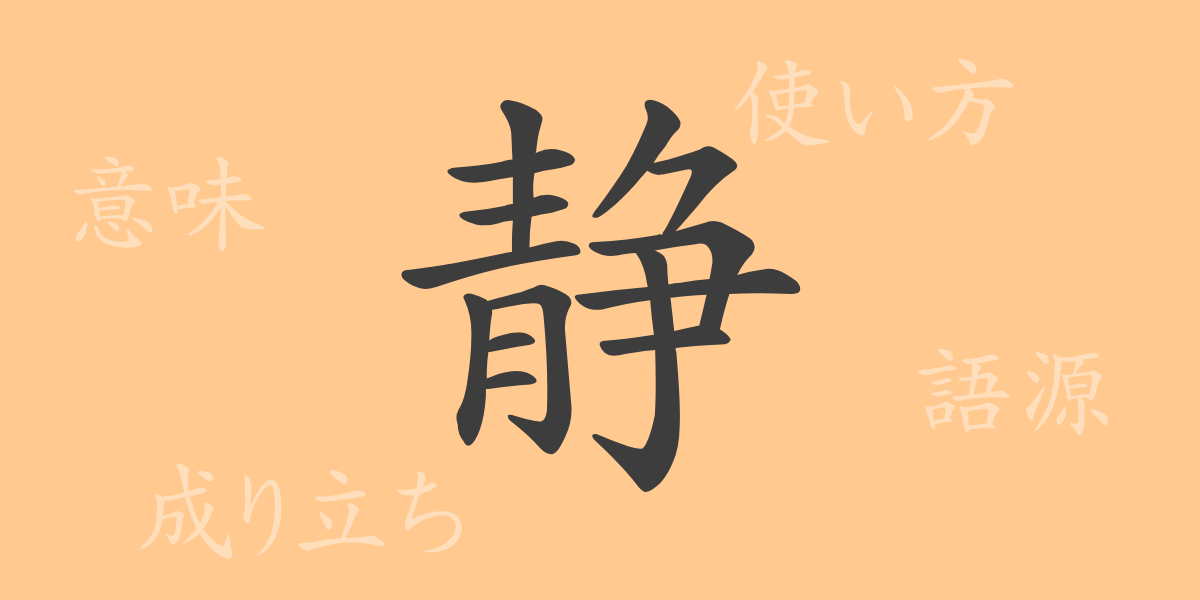Japanese characters are not just symbols; each one possesses a unique history and deep meanings. ‘静’ (セイ, ジョウ), a common kanji seen in daily life, is no exception. This article delves into the rich background of ‘静’, exploring its origins, meanings, usages, and how it permeates our everyday life through various idioms and phrases, offering a glimpse into its serene and calm essence.
Origins of 静
The kanji ‘静’ symbolizes tranquility and silence and has evolved from ancient Chinese pictographs. Originally written as ‘靜’, it combined ‘青’ (indicating the color blue) and ‘争’ (representing conflict or movement), portraying the calmness amidst the blue. Over time, it simplified to ‘静’, capturing the essence of quietness and peace.
Meaning and Usage of 静
‘静’ conveys quietness, calmness, and stillness. It is commonly used as an adjective or noun, seen in phrases like ‘静かな夜’ (a quiet night), ‘心を静める’ (calm one’s mind), and ‘静寂’ (silence). ‘静止’ refers to the cessation of physical movement, while ‘静観’ describes the act of calmly observing the unfolding of events.
Readings, Stroke Count, and Radical of 静
The kanji ‘静’ has multiple readings and features in Japanese.
- Readings: On’yomi (Sino-Japanese reading) are ‘セイ’ and ‘ジョウ’, kun’yomi (native Japanese readings) include ‘しず’, ‘しずか’, ‘しずまる’, ‘しずめる’.
- Stroke Count: ‘静’ comprises 14 strokes.
- Radical: The radical is ‘青’, which denotes color or greenery.
Idioms and Phrases Using 静
Many idioms and phrases incorporate ‘静’, each enriching the Japanese language. For example, ‘静寂’ (せいじゃく ‐ complete silence), ‘静謐’ (せいひつ ‐ peaceful and tranquil), and ‘静観’ (せいかん ‐ calm observation). Proverbs like ‘泰山鳴動して鼠一匹’ (たいざんめいどうしてねずみいっぴきmuch ado about nothing) and phrases such as ‘静水流深’ (せいすいりゅうしん ‐ still waters run deep) illustrate the profound implications hidden beneath outward calmness.
Conclusion on 静
Understanding the meanings embedded in each kanji leads to a deeper appreciation of the Japanese language. ‘静’, with its resonating quietness and tranquility, enriches our language and thoughts. Through its use in everyday idioms and proverbs, we can appreciate the expansive world of expression that this kanji offers. May this exploration of ‘静’ inspire a renewed appreciation for the beauty of Japanese language and culture.

























